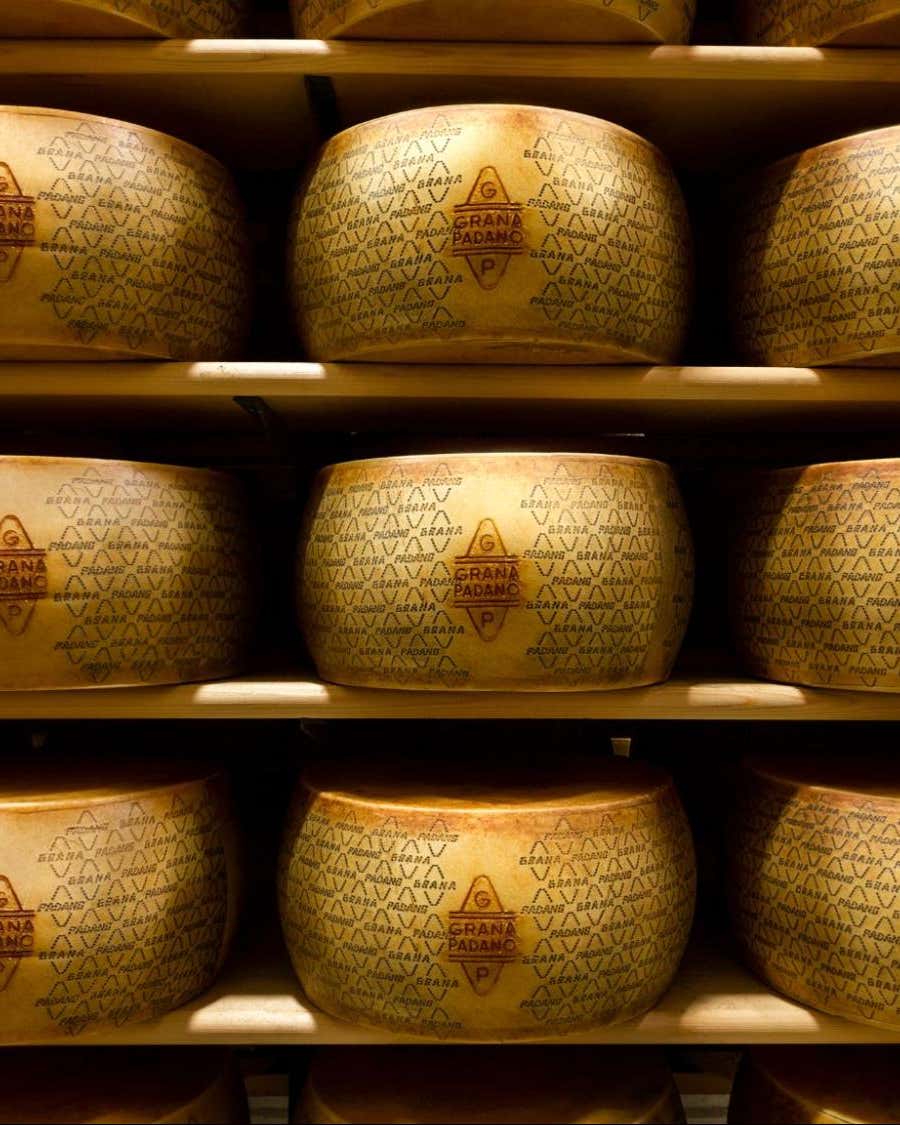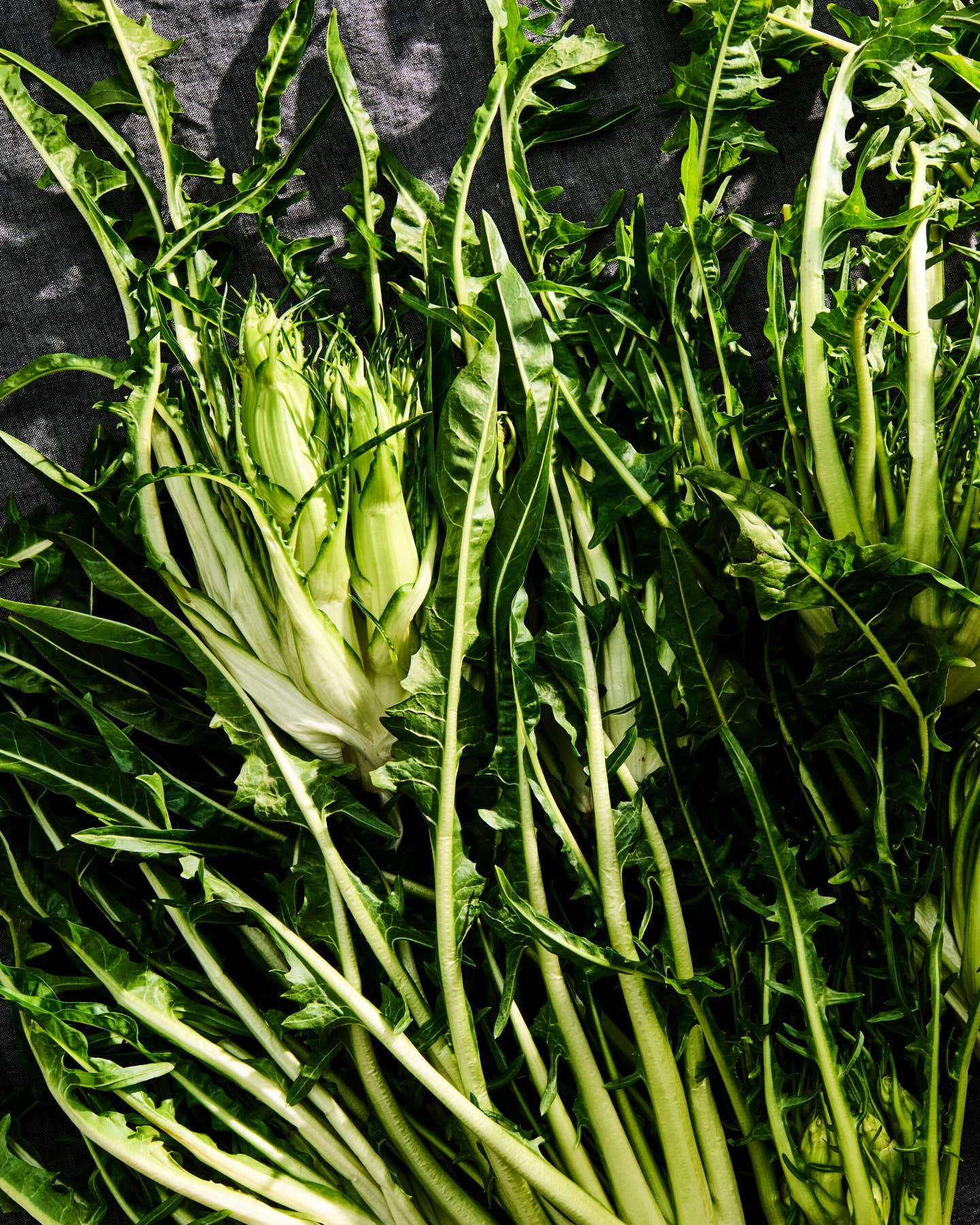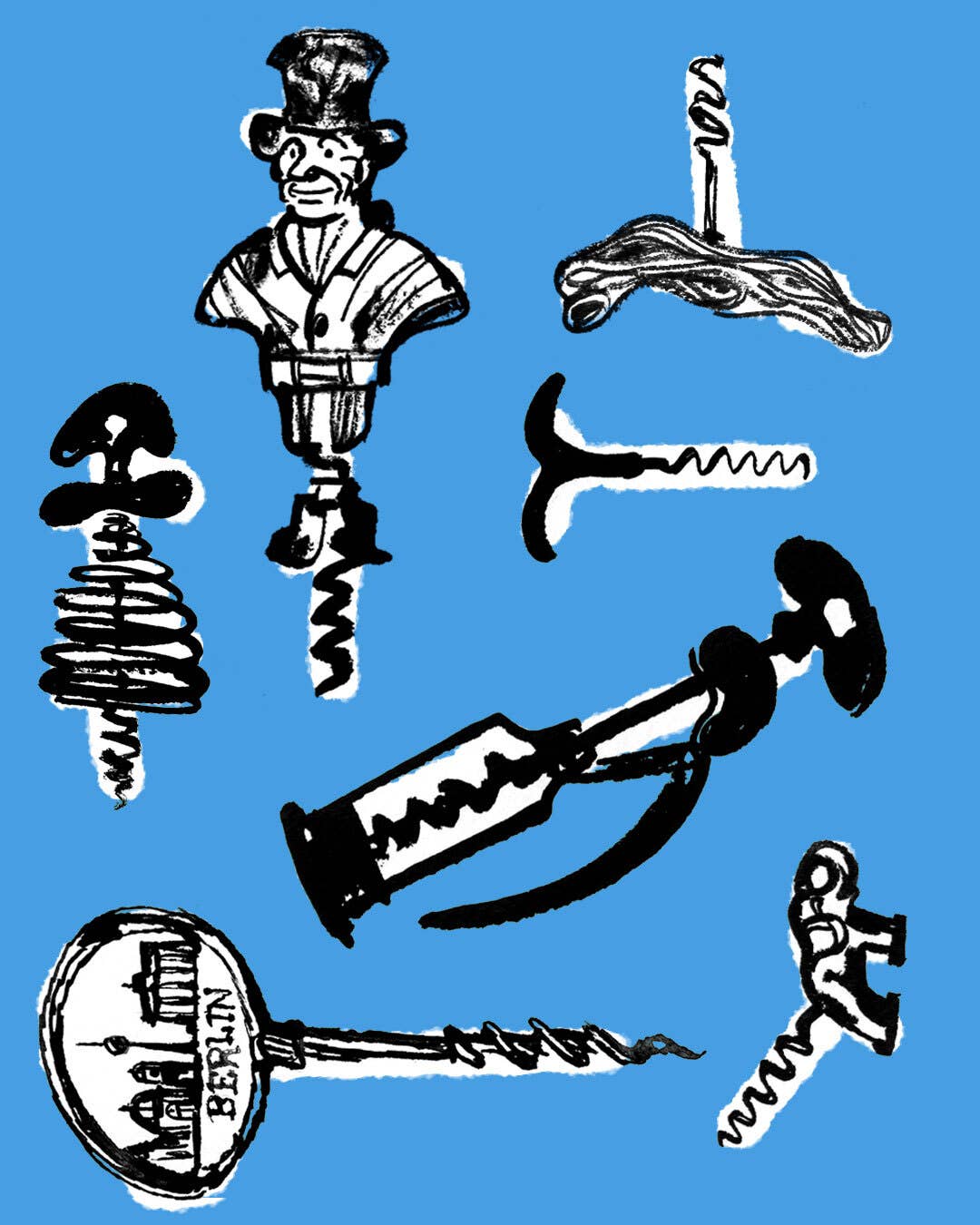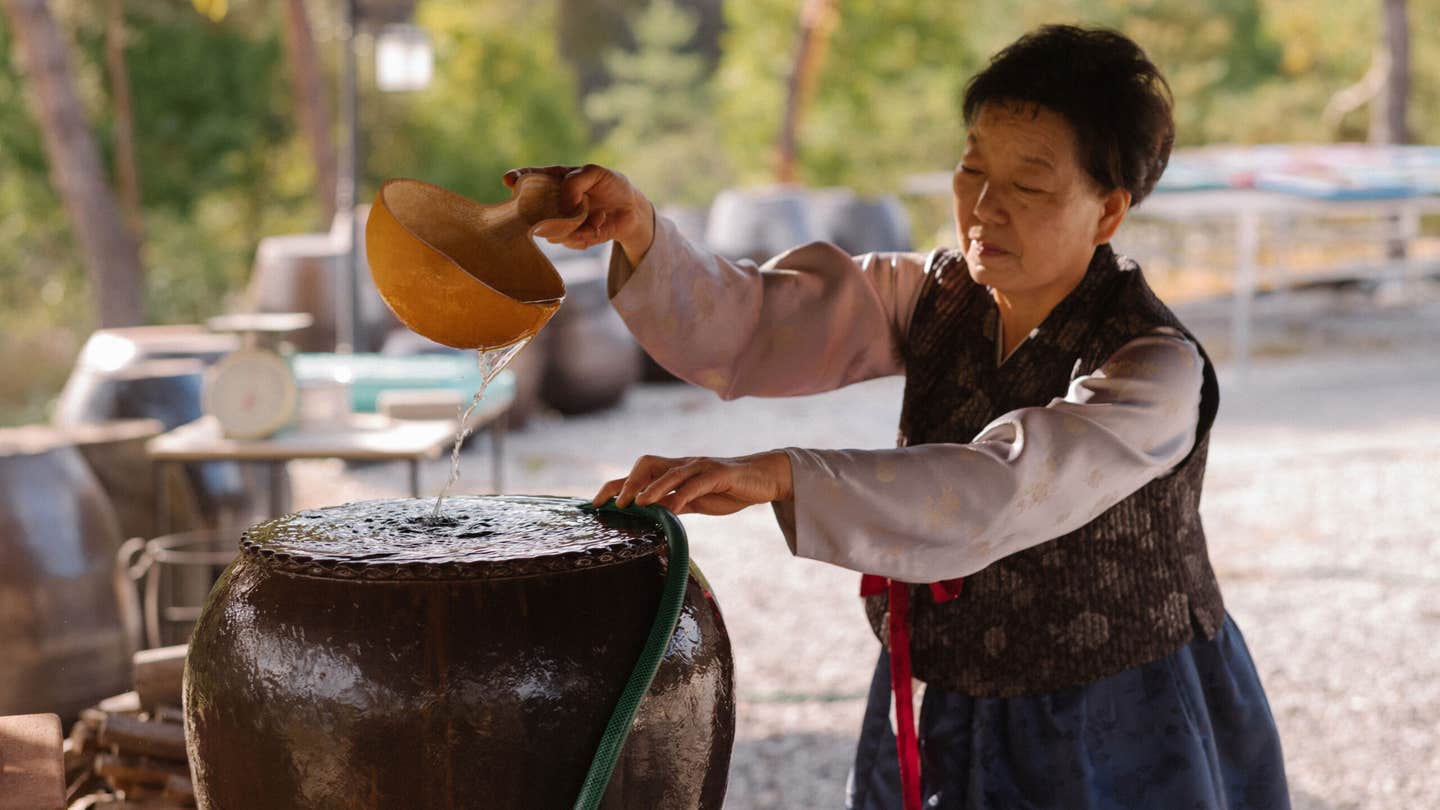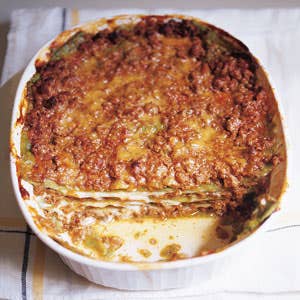
The Lasagne Lesson
Layer by layer, the Simili sisters of Bologna craft an Italian classic so rich in flavor that it puts its American counterparts to shame.
I walked down a narrow alley, into a little courtyard off the via San Felice in Bologna, the Italian city so famous for its rich cuisine that it is sometimes called "la Grassa"—the Fat—and stepped through a door into the kitchen of a modest cooking school called Corsi di Cucina Sorelle Simili. The space looked not unlike a SoHo loft, with high ceilings, big windows with panes framed in black steel, and a low-key contemporary feel. There were piles of bowls and baskets everywhere, and one wall was hung with dozens of aprons. On one of the three four-burner Franke gas cooktops, a stockpot of water crowded with marrow-filled beef bones, chicken pieces, carrots and celery, an onion, and a hunk of parmigiano rind was roiling—on the way to becoming brodo di carne, a delicate meat broth, that would go into the day's bolognese sauce.
The owners of the school, sisters Margherita and Valeria Simili, have been making pasta since they were old enough to stand. They learned by watching their mother in the big kitchen at home in Bologna, then went to work for their father, Armando, who owned one of the city's best bakeries, making tortellini and other local specialties in his back room. Armando closed his bakery and retired in 1973, and the sisters opened their own shop in 1979.
In 1972, Marcella Hazan—then in the process of becoming the doyenne of Italian cooking teachers, in both Italy and America—and her husband and collaborator, Victor, met the Similis at a dinner in Bologna. They were impressed, and when the Hazans opened a cooking school there in 1976, they hired first Valeria and then Margherita to help teach. "Margherita in particular was there with me all the time," Marcella remembers. "She is very, very good with bread, focaccia, pizza, traditional desserts, and, of course, pasta. She's wonderful at closing tortellini. Do you know how many she can close in one minute? Forty-four!"
In 1986 the sisters, with Marcella's encouragement (and the equipment from her school, which she had by then moved to Venice), opened their own cooking school—on the via San Felice, the same street on which their father's bakery had once thrived. In 2001, at the age of 65 (they are fraternal twins), Valeria and Margherita closed the school. (It was just too much, they said; they will continue to teach, but not full-time.) Before they did, however, I visited them at their school, where they taught me—with infinite patience, calm skill, and irresistible enthusiasm—how to make the most famous and savory of all Italian baked pasta dishes (and one of the Similis' particular specialties): lasagne.
The very wide, flat pasta sheets known as lasagne (the plural of lasagna; a purist would argue that if you're eating "lasagna", you're getting only one sheet) have apparently been around since the 1300s, if not earlier, and the first Italian recipe for a finished dish that vaguely resembles lasagne as we know it today—the sheets are layered with ground spices and grated cheese—appears in a 14th-century manuscript called Liber de coquina, compiled at the Angevin court in Naples.
Today, lasagne is known all over Italy (the Genoese even make one with layers of pesto), but the rich, complex version typical of the region of Emilia-Romagna—and especially of Bologna—has become emblematic of the dish. This interpretation of lasagne, with its freshly made spinach pasta, its intensely flavored, meaty bolognese sauce, its silky besciamella (better known by its French name, béchamel), and its restrained sprinkling of cheese, is obviously the inspiration for the chunky, oozy party dish most Americans know as lasagne (or, more likely, lasagna). But it's a very different thing, more modest in stature, more refined in texture, more subtly flavored—as I was about to learn.
As Valeria effortlessly whisks up a béchamel, then attends to the bolognese, Margherita—who is smaller than her sister but much more voluble, never lighting anywhere for more than a few seconds, talking all the time, explaining everything but with useful energy, not distracting frenzy—pours flour onto the table from a dark yellow paper cone to start making the pasta.
With her fist, she makes a well—no, a crater—in the flour, puts in a handful of spinach (boiled, squeezed as dry as possible, and finely chopped), and breaks eggs with luminous red-orange yolks into a bowl, then scrambles them into the spinach. With exquisite slowness, she works the flour in from the edges of the crater, mixing it gradually with the eggs and spinach, then kneads the dough into a smooth ball with the kind of grace and sureness that comes only from a lifetime of practice. Then she cuts the dough into four pieces and flattens each of them into a disk. These she feeds through her pasta machine, which she cranks with great gusto.
The lasagne go into a pot of boiling salted water and then, when they've just cooked through, into a bowl of cold salted water next to the pot, to stop their cooking (and "so they don't lose flavor," offers Valeria). When they've cooled, the sheets are laid out on clean kitchen towels to dry.
Assembling the lasagne is a matter of real precision. A baking pan is buttered, then lined with the first sheets of pasta, cut to fit the vessel and patched with the scraps; three big spoonfuls of meat sauce are spread on top of it ("Not too much, or the lasagne will be too heavy," counsels Margherita); then a thin layer of grated parmigiano-reggiano is sprinkled on. Then come another layer of pasta, covered with four spoonfuls of béchamel and more parmigiano; pasta, sauce, and cheese; pasta and béchamel; and, finally, a fifth layer of pasta, the last of the bolognese, and still more parmigiano.
The lasagne dish at last goes into the oven, where it bakes until the whole thing bubbles and seethes and the top turns brown. It emerges, looking flatter than I would have imagined but issuing aromas that make our hearts beat fast and our stomachs growl. Valeria and Margherita seem to be anticipating the first taste as much as I am, and I realize that, when they teach, the important thing isn't just the imparting of instructions; their mission is to get finished food on the table and then to sit down and eat it. "Relaxing at the table is a wonderful thing," sighs Margherita, and we tuck in to the lasagne. It is rich and immediately satisfying, with at least as many layers of flavor as there are layers of pasta, sauce, and cheese.
"The Simili sisters," says Marcella Hazan, "do lasagne as it is supposed to be done." As usual, she is absolutely right.
Keep Reading
Continue to Next Story






